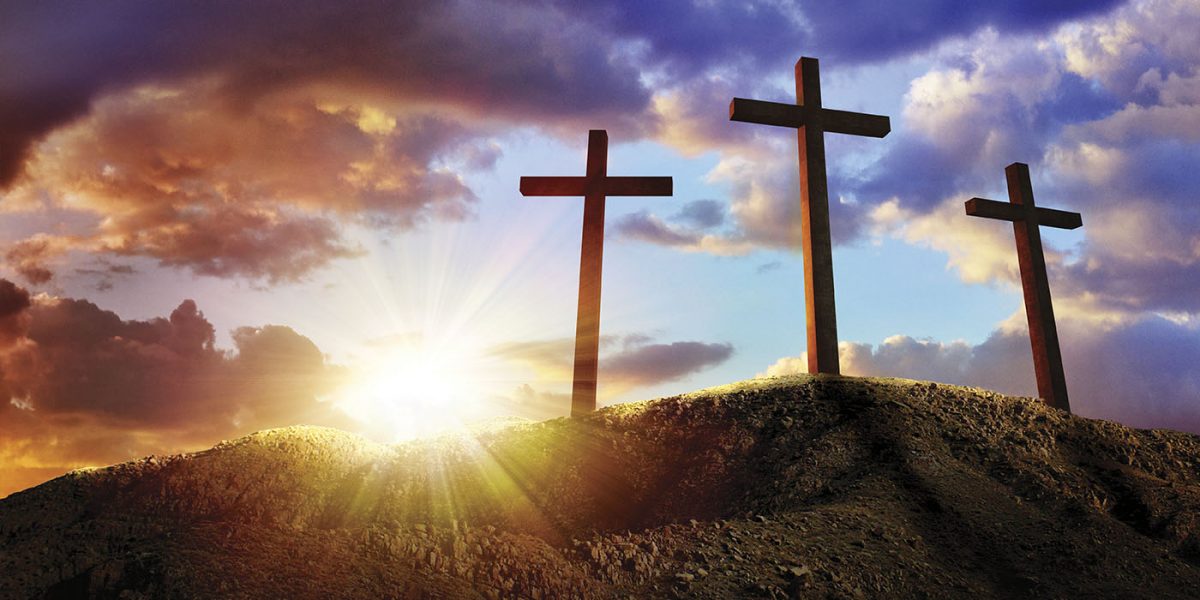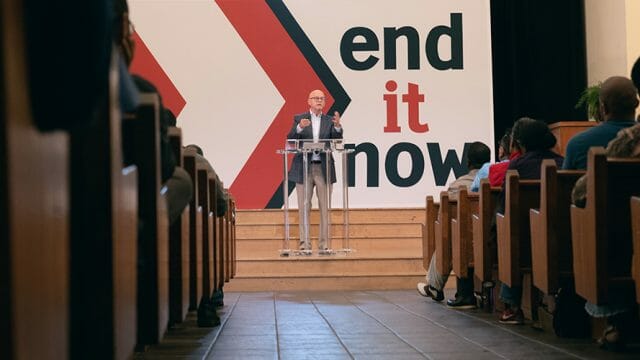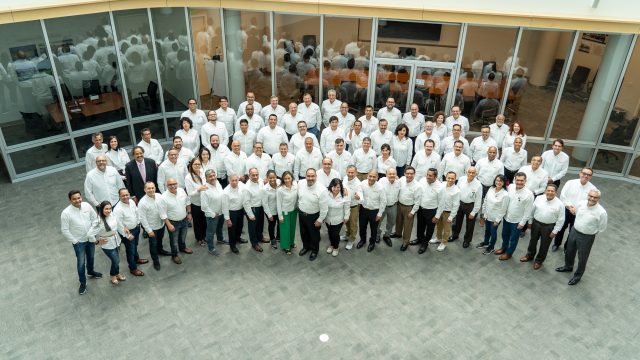Our last-day message

This is adapted from a sermon delivered at Annual Council, October 12, 2019, in Silver Spring, Maryland, United States. Elements of oral style have been retained.—Editors.
Clouds were gathering. It was becoming very dark. Something ominous was about to happen. Suddenly an earthquake shook so violently that tombs opened! Hanging on the cross was the Lifegiver, the One losing His life for you and me.
A few moments earlier, one of the thieves had mocked Jesus: “If You are the Christ, save Yourself and us” (Luke 23:39). The other thief quieted the first one. Then turning to Jesus, the man said, “Lord, remember me when You come into Your kingdom” (verse 42).
Jesus replied, “I say to you today, you will be with Me in Paradise” (verse 43).
That’s justification. Immediate! But Christ’s righteousness does not end with justification. It continues as we accept the power of the Holy Spirit to sanctify us, working in our lives to will and do according to His good pleasure, not our own.
See Jesus hanging on the cross, suspended between heaven and earth, humiliated, naked, suffering physically and mentally, dying for you and me. “He humbled Himself and became obedient to the point of death, even the death of the cross” (Phil. 2:8).
Jesus died. He rested on the seventh-day Sabbath, and on the morning of the first day He rose from the grave. Now He ministers for us in the Most Holy Place of the heavenly sanctuary, giving us the opportunity of eternal life!
CHRIST’S WORK
The writer of Hebrews wrote: “Seeing then that we have a great High Priest who has passed through the heavens, Jesus the Son of God, let us hold fast our confession. For we do not have a High Priest who cannot sympathize with our weaknesses, but was in all points tempted as we are, yet without sin. Let us therefore come boldly to the throne of grace, that we may obtain mercy and find grace to help in time of need” (Heb. 4:14-16).
Christ offers us His amazing, restoring salvation. Further in Hebrews we read: “Therefore, brethren, having boldness to enter the Holiest by the blood of Jesus, by a new and living way which He consecrated for us through the veil, . . . and having a High Priest over the house of God, let us draw near with a true heart in full assurance of faith, having our hearts sprinkled from an evil conscience and our bodies washed with pure water. Let us hold fast the confession of our hope without wavering, for He who promised is faithful. And let us consider one another in order to stir up love and good works” (Heb. 10:19-24).
Here is an allusion to sanctification. When we accept this marvelous power and His robe of righteousness, we are empowered to do good works. It’s a beautiful concept of what’s happening in the heavenly sanctuary right now.
Ellen White wrote: “The sanctuary in heaven is the very center of Christ’s work in behalf of men. It concerns every soul living upon the earth. It opens to view the plan of redemption, bringing us down to the very close of time, and revealing the triumphant issue of the contest between righteousness and sin. It is of the utmost importance that all should thoroughly investigate these subjects and be able to give an answer to everyone that asketh of them a reason of the hope that is in them.”¹
This is not just for pastors, elders, or specialists in sanctuary doctrine—it’s for all of us.
THE WEDDING GARMENT
Jesus told an interesting story about a wedding. “The kingdom of heaven is like a certain king who arranged a marriage for his son” (Matt. 22:2). He sent his servants and said, “Tell those who are invited, ‘. . . Come’” (verse 4).
But they didn’t come. Worse yet, they treated the messengers “spitefully, and killed them” (verse 6). The king was furious and sent his armies to destroy the murderers and burn their city.
He said to his servants, “‘The wedding is ready, but those who were invited were not worthy. Therefore go into the highways, and as many as you find, invite to the wedding.’ So those servants went out and . . . gathered together all whom they found, both bad and good. And the wedding hall was filled with guests” (verses 8-10).
Notice: both “the good and the bad” came. In our work we are not only to minister to people we think are good; we are to minister to everyone. Also, the church will have those who love God and those who don’t until the very end, when the wheat and the tares will be examined. Then the Lord will save those who are truly connected with Him. But we should never turn anyone away.
In the parable, one man came without a wedding garment. The king asked, “Friend, how did you come in here without a wedding garment?” (verse 12). The man was speechless. Then the king said to the servants, “Bind him hand and foot, take him away, and cast him into outer darkness” (verse 13).
Ellen White wrote a beautiful explanation of this parable: “By the wedding garment . . . is represented the pure, spotless character which Christ’s true followers will possess. . . . It is the righteousness of Christ, His own unblemished character, that through faith is imparted to all who receive Him as their personal Saviour. . . . Only the covering which Christ Himself has provided can make us meet [prepared] to appear in God’s presence. This covering, the robe of His own righteousness, Christ will put upon every repenting, believing soul.”²
That robe of righteousness is justification provided by Christ’s perfect life in place of our sinful life. Then immediately we accept the Holy Spirit into our life and Christ’s righteousness begins to work in us, and we become new creatures.
“For by grace you have been saved through faith, and that not of yourselves; it is the gift of God, not of works, lest anyone should boast. For we are His workmanship, created in Christ Jesus for good works, which God prepared beforehand, that we should walk in them” (Eph. 2:8-10).
RESTORATIVE SALVATION
Let me share a powerful illustration of what God’s restoring salvation can do in the life of a convicted murder. Don Johnson brutally killed his wife in 1984 and was recently executed by the state of Tennessee. Don became a Christian in prison, then a Seventh-day Adventist and a church elder in prison. He was befriended over many years by an Adventist family and others who witnessed to him, encouraging him to become a strong witness in prison.
God changed Don’s life from being a murderer to being a humble servant of God. Nevertheless, on May 16, 2019, he died by lethal injection in a Tennessee prison. On the day of his execution, Don went without his final meal, asking that it be given to the homeless. He was calm as he was
strapped down, praying: “I commend my life into your hands. Thy will be done. In Jesus’ name I pray, amen.” He then sang as the lethal drugs entered his body. His last song was “We Are Going to See the King.”
Don represents those whose lives are changed by the power of the gospel message, with Christ’s justification covering them and His sanctifying power working in their lives. What an illustration of God’s restoring salvation, the gospel message, and Christ’s sanctuary message!
Paul wrote: “But when the kindness and the love of God our Savior toward man appeared, not by works of righteousness which we have done, but according to His mercy He saved us, through the washing of regeneration [justification] and renewing of the Holy Spirit [sanctification], whom He poured out on us abundantly through Jesus Christ our Savior, that having been justified by His grace we should become heirs according to the hope of eternal life” (Titus 3:4-7).
This is the message that Seventh-day Adventists must live and preach as we head into the last days of earth’s history. I invite you to renew your spiritual vision and mission focus, turning from peripheral and distracting challenges, and focus attention on lifting up Christ, His Word, His righteousness, His sanctuary service, His saving power in the great controversy, His three angels’ messages, His health message, His last-day mission to the world, His restoring salvation, and His soon second coming.
¹Ellen G. White, The Great Controversy (Mountain View, Calif.: Pacific Press Pub. Assn., 1911), p. 488.
² Ellen G. White, Christ’s Object Lessons (Washington, D.C.: Review and Herald Pub. Assn., 1900, 1941), pp. 310, 311.








